This is the first mass production of large-scale OEL panels, which is expected to speed up the replacement of LCD components by OEL panels.
According to reports, LGD has invested approximately 500 billion won in the Paju Plant in the north of Seoul and set up an experimental production line for large-scale OEL panels. Mass production will begin soon. Starting next year, the LLDP Pazhou plant's OEL panel production line will begin to replace the LCD production line; the company plans to invest in the main equipment of the OEL panel in 2015 with an additional investment of approximately 1 trillion won.
The LCD panel is still the mainstream of TV components. However, as the thin TV market matures, profits are declining. While OEL technology is difficult, due to high picture quality, investment will be high as soon as possible, so LGD hopes to use existing The production line will reduce the investment amount and mass produce large-scale OEL panels to boost profitability.
OEL, also known as Organic Light Emitting Diodes (OLEDs), has the advantages of active light emission, fast response, power saving and thinness, as well as features that can be applied to flexible panels and is considered as one of the most desirable displays.
Lejin Electronics, a subsidiary of Lucky Group, will launch a 55-inch thin TV with OEL panel this year. LGD will first ship OEL panels to Lejin Electronics. In the future, it will increase the number of foreign sellers after seeing the status of Japan and other TV night fans. Sale. Stolen by the low price of LCD panels, LGD has lost 7 consecutive quarters.
Lejin Electronic Home Entertainment Company pointed out that Lejin will actively invest in the OLED TV market and create new momentum for profit growth. In addition to the expansion of OLED TV production lines and the launch of numerous next-generation TV products next year, it will also expand the CINEMA 3D TV production line and improve Global 3D TV sales.
South Korea’s Samsung Electronics and Lucky Gold are currently leading the OEL panel market, followed closely by Japan’s Toshiba, Hitachi and Sony’s Japan Display (JDI), which plans to start mass production of small and medium-sized OEL panels next year; Samsung Electronics’ The global market share of the small and medium-sized OEL panel market is as high as 90%. Sony and Panasonic hope to jointly develop low-cost large-scale OEL panel production technology next year.
8 Layer PCB - Stackup & Cost & Prototype manufacture
What is 8 layer PCB?
The 8 layer PCB is a circuit board with 8 layers that are stacked firmly together with predefined and dependable mutual connections between the layers. Structure of eight layer PCB is more complicated. Nowadays, PCBs frequently have 8 to 12 layers or more, and electronics engineers know that designing for so many layers requires a well-configured layer stack.
8-layer Printed Circuit Boards are usually installed in compact equipment with strict spacing requirements, such as notebook computer motherboard, communication backplane, wearable watches, etc. Because of its complexity and high manufacturing costs, your 8-layer PCB Manufacturing should be made by reliable and experienced manufacturers. Jinghongyi PCB has been specially targeting high-end PCB manufacturing and assembly services for 8 years, providing high-quality products and services for various customers. Our advanced production line and fast response team will keep you comfortable and reassured, without any trouble, you can rest assured to place the order with us.
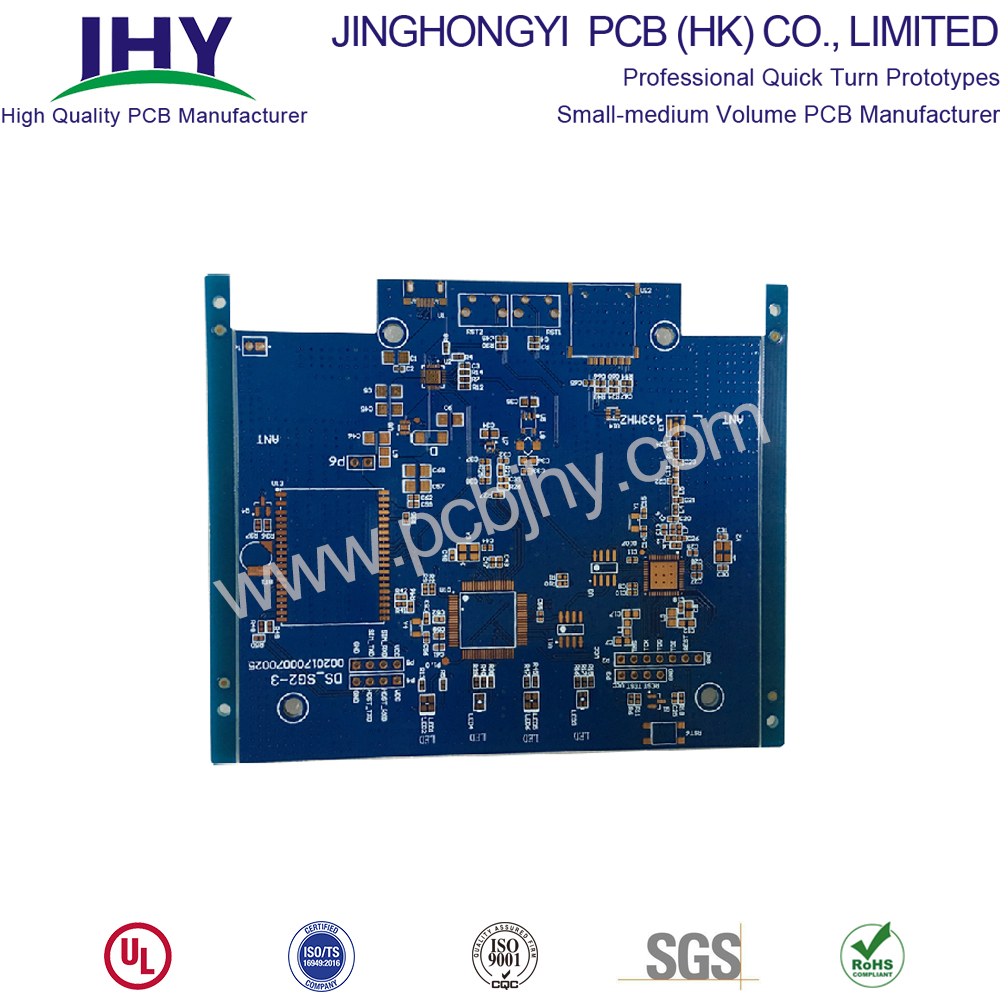
Typical 8-layer PCB stack up methods and guidelines
Standard stackup of 8 layer PCB looks as follows
- Signal1
- Ground
- Signal2
- Power
- Ground
- Signal3
- Power
- Signal4
Eight-layer PCB can be used to add two additional layers, or two planes can be added to improve EMC performance. Most eight-layer circuit boards are superimposed to improve EMC performance, rather than adding additional wiring layers. Compared with 6-layer circuit boards, the cost increase percentage of 8-layer PCB is less than that of 4-layer PCB to 6-layer PCB. Therefore, in order to improve EMC performance, the cost increase is reasonable. Therefore, most 8-layer boards consist of four wiring layers and four planes.
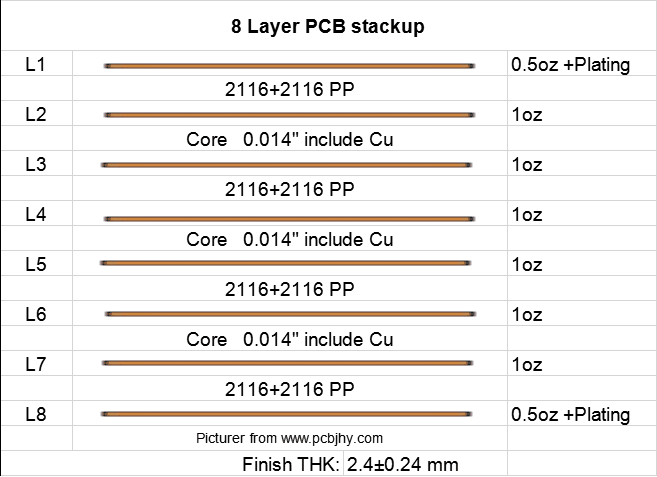
8 Layer PCB Stack up
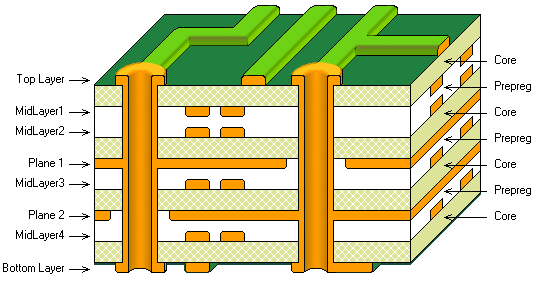
8 Layer PCB stackup
In short, 8 layer PCB are usually used to improve the EMC performance of circuit boards, rather than increasing the number of layers.
No matter how you decide on the stack layer, it is not recommended to use an 8-layer PCB Board with six wiring layers. If you need six routing layers, you should use a 10 Layer PCB board. Therefore, the 8-layer board can be regarded as the six-layer board with the best EMC performance.
Basic Layer of Eight-Layer Circuit Board with Excellent EMC Performance
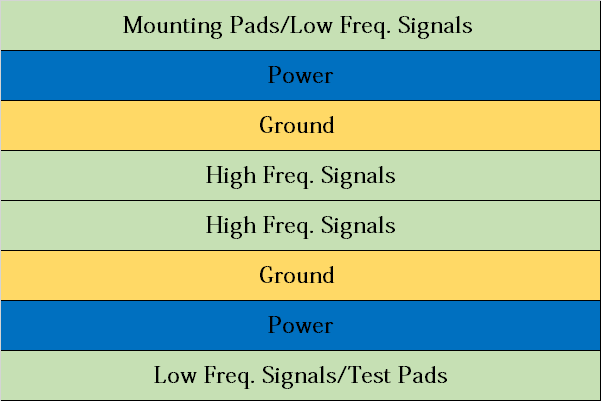
All signal layers are adjacent to the plane, and all layers are tightly coupled. High-speed signals are buried between planes, so planes provide shielding to reduce the transmission of these signals. In addition, the circuit board uses multiple grounding layers to reduce the grounding impedance.
Other forms of 8-layer PCB stackup
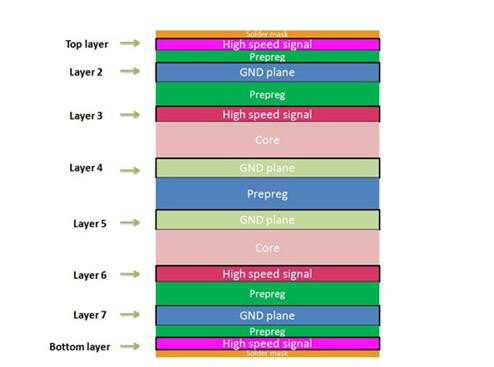
A typical 8 Layer PCB Stackup
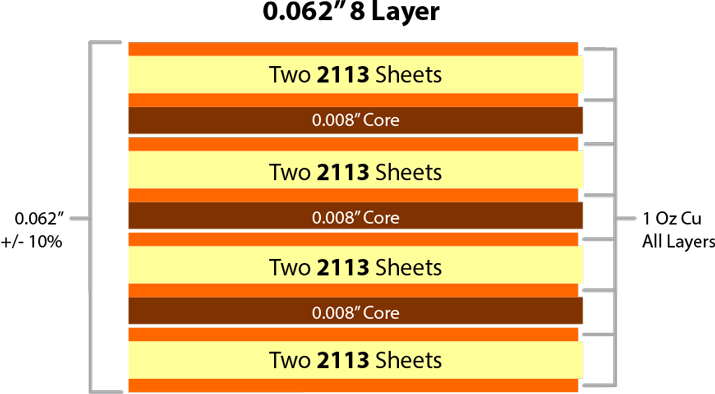
0.062[8 layer PCB stackup
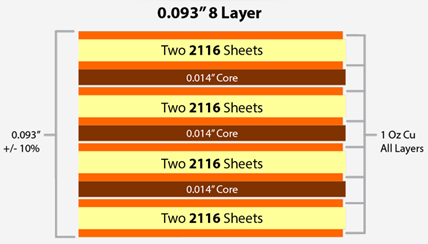
0.093[ 8-Layer PCB Stackup
So far, we have also clarified the cost and price differences between 6-layer PCB, 8-layer PCB and 10-layer PCB.
8 Layer PCB thickness
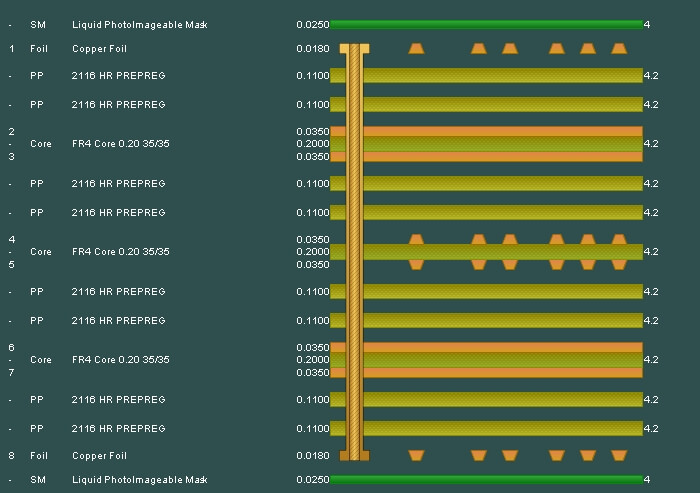
8 LAYER 1.6 MM STANDARD STACKUP AND THICKNESS
8 Layer Stackup - 1.6mm thickness |
||||||
| layer order | layer name | material type | material description | dielectric constant | thickness | copper weight |
| 1 | top | copper | signal | 0.035mm | 1 oz | |
| 2116 | prepreg | 4.5 | 0.12mm | |||
| 2 | inner 1 | copper | plane | 1 oz | ||
| core | 4.6 | 0.3mm | ||||
| 3 | inner 2 | copper | plane | 1 oz | ||
| 7630 | prepreg | 4.7 | 0.2mm | |||
| 4 | inner 3 | copper | plane | 1 oz | ||
| core | 4.6 | 0.3mm | ||||
| 5 | inner 4 | copper | plane | 1 oz | ||
| 7630 | prepreg | 4.7 | 0.2mm | |||
| 6 | inner 5 | copper | plane | 1 oz | ||
| core | 4.6 | 0.3mm | ||||
| 7 | inner 5 | copper | plane | 1 oz | ||
| 2116 | prepreg | 4.5 | 0.12mm | |||
| 8 | bottom | copper | signal | 0.035mm | 1 oz | |
| Final board thickness: 1.6mm±0.13mm | ||||||
8-Layer Prototype PCB Manufacturing Service
The 8-layer prototype FR-4 PCB is an 8-layer circuit board, which is firmly stacked together with predefined and reliable interconnection between layers. The 8-layer FR-4 PCB has more complex structure. Jinghongyi PCB is a large enterprise located in Shenzhen, China, which can manufacture 8-layer prototype PCB.
Jinghongyi PCB can provide you with multi-layer PCB board in accordance with RoHS standard. With laminated material, it can match high temperature in assembly process. Importantly, some lead-free assembly processes will require laminated substrates to withstand temperatures exceeding 260 degrees Celsius or 500 degrees Fahrenheit over a longer period of time. To solve this problem, we have high temperature laminates in stock, so that our customers can meet the higher temperature cycle requirements of some lead-free assembly applications.
JHY PPCB is one of the leading 8 layer PCB manufacturers. For more information, pls send email to us.
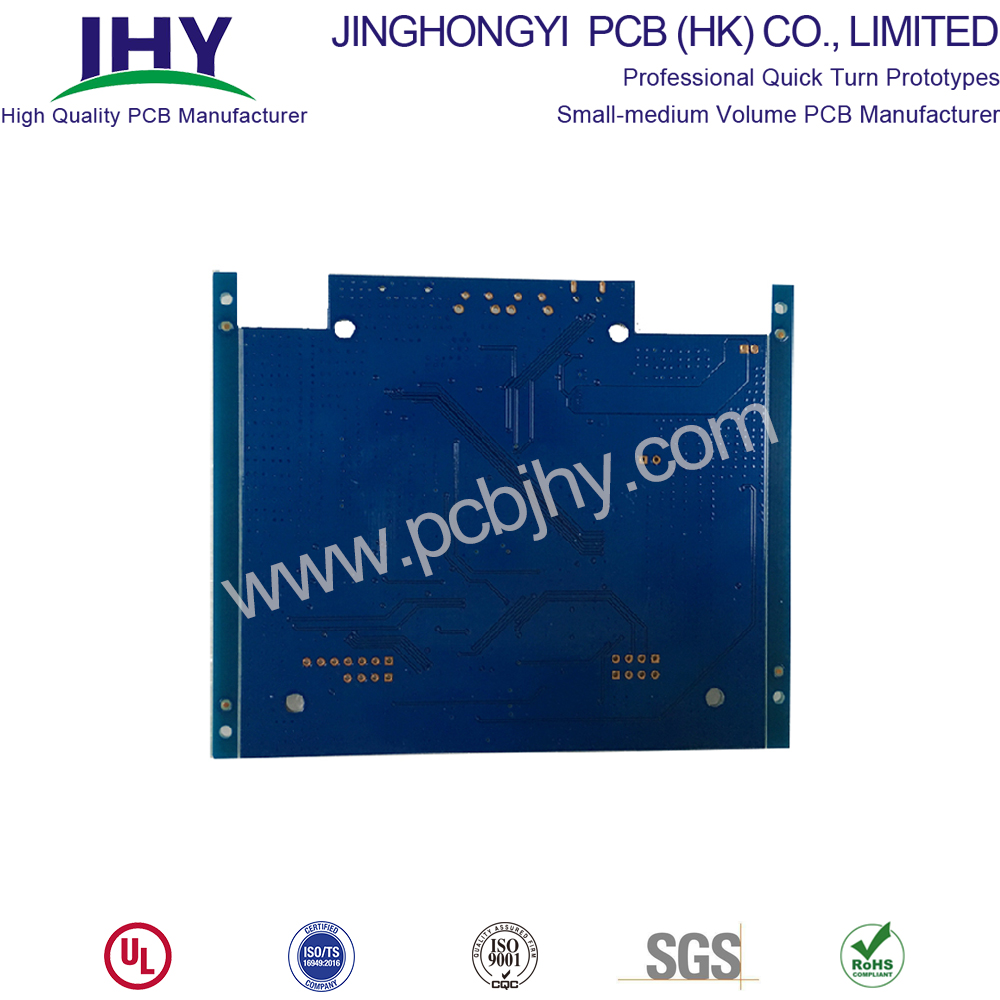
8 Layer PCB
PCB Circuit Board,8 Layer PCB,Custom multilayer pcb,Custom 8 Layer PCB
JingHongYi PCB (HK) Co., Limited , https://www.pcbjhy.com